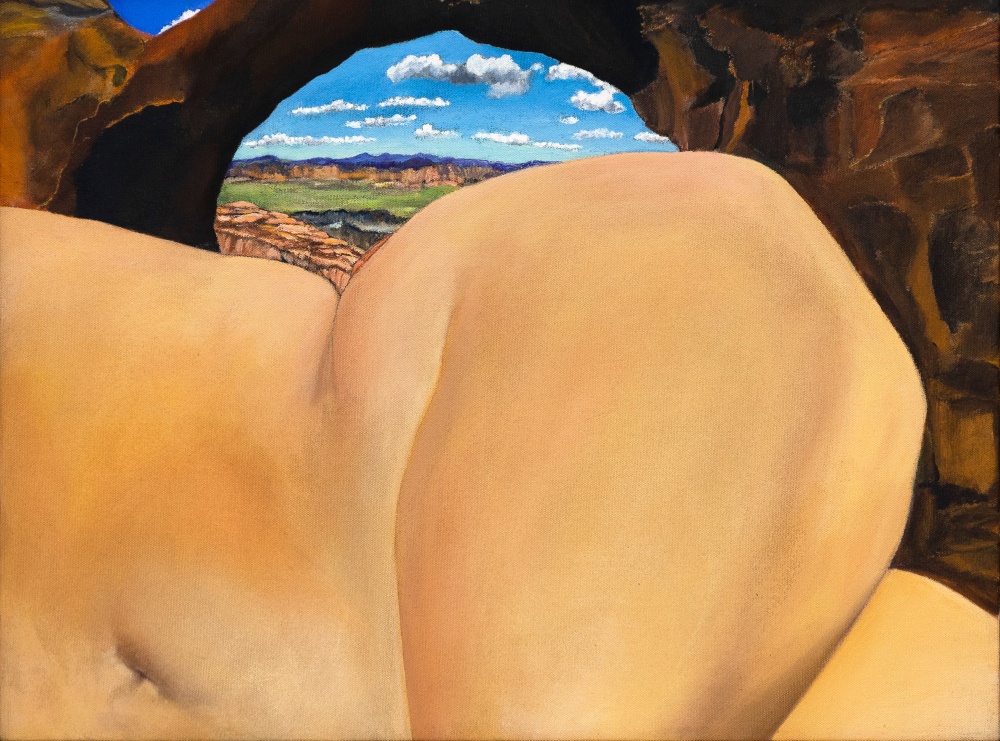
Martha Edelheit
Arches Nat'l Park, 1974–75
acrylic on canvas
20.0h x 24.0w in
50.8h x 60.96w cm
For the second year in a row, far from Frieze New York in Hudson Yards, the SoHo art dealer Eric Firestone is hosting 18 New York galleries, all of whom are celebrating the 1970s.
The fair is situated on the upper floors of Firestone’s gallery on Great Jones Street, where painter Jean-Michel Basquiat and jazz musician Charles Mingus once lived. (Basquiat’s former home now houses Angelina Jolie’s clothing store Atelier Jolie.)
Up the broad, creaky wooden stairs, on the third and fourth floors, Firestone assembled some of the buzziest galleries in the city, including Andrew Kreps, Ortuzar Projects, and James Fuentes, for an event he runs called That ‘70s Show. It’s being called an art fair by some, though apart from the fact that more than a dozen galleries are participating, it doesn’t feel like one.
You’re not likely to find blue-chip names here, or at least, not the ones being shown at Frieze in the escalator-lined Shed. Here, the work is punchy, often funny, sometimes edgy—exactly how you want your 1970s New York.
“We really just wanted to do something fun that was removed from everything else happening this week,” Firestone said, adding that the community around these artists, many of whom are woefully under-recognized and worth reexamining, help makes New York the art world what it is.
Firestone’s contributions include a number of works by the feminist artist Martha Edelheit, which are as funny as they are sensual and surreal. The pictures show close-ups of backs, chests, bottoms—no discernible features here—against a backdrop of cityscapes or a landscape. In Arches Nat’l Park (1974–75), Edelheit has painted a figure laying on its side, knees curled up and cozy, the slope of the left buttock echoed by a stone arch in the background, behind which is a red-rock mountain ranges and an endless Utah sky.
George Adams Gallery brought work by the Havana-born artist Luis Cruz Azaceta, whose work comments on, and often satirizes, the urban violence and racism that was endemic in New York during the ’70s. For him, humor was the best way to come to grips with the moral and ethical dilemmas that engulfed the city. The pictures are wildly colorful, cartoonish, and incredibly violent. In Coney Island Local (1975), a man on the subway is eaten alive by an alligator while straphangers in fishnet stockings and wide-lapeled suits casually read the news.
Not all the work has a comedic tinge, of course. Karma’s offering of meditative black and white works by the artist Norman Zammitt, from the artist’s “Band Paintings” series, were a pleasant visual break from the sometimes frenetic colors and themes that are so prevalent in the era. The works, each titled with a variation of the phrase “Black and White,” are based on Zammitt’s proprietary logarithmic system of tonal progression.
That ‘70s Show runs from May 2–5.